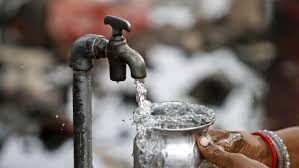Sponsor: Northwestern University
Collaborator: Kenya Medical Research Institute
Information provided by (Responsible Party): Northwestern University
Brief Summary:
This study will implement the validated household-level water insecurity scale developed by study investigators among a cohort of postpartum women in Nyanza, Kenya and will assess a range of outcomes linked to water insecurity, such as viral load, hydration status, maternal depression, stress, food insecurity, and cognitive development.
Condition or disease
- Maternal and Child Health
- HIV
Detailed Description
This study will develop the first well-known household water insecurity scale. Currently, water insecurity cannot be measured at the level of the household or individual, i.e. at the endpoint of water use. Although there are myriad national, regional, community, and hydrological indexes of water availability, to the investigators’ knowledge, there is no way of measuring water access at the household or individual levels. Without a comprehensive, validated scale to measure household water insecurity, the scientific, programmatic, and public health communities cannot empirically test the prevalence of household water insecurity access and its potential impacts on economic, nutrition, disease, and psychosocial health pathways and outcomes.
Study Design
Study Type: Observational
Actual Enrollment: 266 participants
Observational Model: Cohort
Time Perspective: Prospective
Official Title: Pii Ngima: Consequences of Water Insecurity for Maternal and Child Health
Actual Study Start Date: February 2016
Primary Completion Date: July 31, 2017
Study Completion Date: July 31, 2017
Outcome Measures
Primary Outcome Measures
Determine if water insecurity (novel scale) is detrimental to physical health (hemoglobin, hair cortisol, other biomarkers) in ways distinct from food insecurity (Individual Food Insecurity Access Scale) [Time Frame: 2 years]
The investigators are collecting longitudinal cohort data from women who were recruited during pregnancy and have been followed through the first 18 months of the infant’s life. Participants are interviewed at regular intervals to gather information on the various pathways through which water insecurity (measured using a novel scale) may be deleterious in ways similar to food insecurity (measured using the Individual Food Insecurity Access Scale).
Determine if water insecurity (novel scale) is detrimental to nutrition (Household Dietary Diversity Scale) in ways distinct from food insecurity (Individual Food Insecurity Access Scale) [Time Frame: 2 years]
The investigators are collecting longitudinal cohort data from women who were recruited during pregnancy and have been followed through the first 18 months of the infant’s life. Participants are interviewed at regular intervals to gather information on the various pathways through which water insecurity (measured using a novel scale) may be deleterious in ways similar to food insecurity (measured using the Individual Food Insecurity Access Scale).
Determine if water insecurity (novel scale) is detrimental to psychosocial health (Perceived Stress Scale, Center for Epidemiology Depression (CES-D) scale, etc.), in ways distinct from food insecurity (Individual Food Insecurity Access Scale) [Time Frame: 2 years]
The investigators are collecting longitudinal cohort data from women who were recruited during pregnancy and have been followed through the first 18 months of the infant’s life. Participants are interviewed at regular intervals to gather information on the various pathways through which water insecurity (measured using a novel scale) may be deleterious in ways similar to food insecurity (measured using the Individual Food Insecurity Access Scale).
Determine if water insecurity (novel scale) is detrimental to economic security (asset index) in ways distinct from food insecurity (Individual Food Insecurity Access Scale) [Time Frame: 2 years]
The investigators are collecting longitudinal cohort data from women who were recruited during pregnancy and have been followed through the first 18 months of the infant’s life. Participants are interviewed at regular intervals to gather information on the various pathways through which water insecurity (measured using a novel scale) may be deleterious in ways similar to food insecurity (measured using the Individual Food Insecurity Access Scale).
Secondary Outcome Measures
Determining if water insecurity (measured using a novel tool) will differ by HIV status [Time Frame: 2 years]
The investigators collected longitudinal data to assess water insecurity among the cohort (using a novel tool) and will compare the prevalence and impacts of water insecurity by HIV status
Eligibility Criteria
Ages Eligible for Study: 18 Years to 48 Years (Adult)
Sexes Eligible for Study: Female
Accepts Healthy Volunteers: Yes
Sampling Method: Non-Probability Sample
Study Population
A cohort of postpartum HIV-infected and -uninfected women (ratio 1:1) who were previously enrolled into the Pith Moromo (clinical trials ID: NCT02974972) research study in Nyanza, Kenya.
Criteria
Inclusion Criteria:
Women >18 years of age with infants enrolled into the Pith Moromo (clinical trials ID: NCT02974972) study
Infants born to pregnant women enrolled in the cohort study
Exclusion Criteria:
Individuals <18 years of age that are not infants born to women enrolled in the cohort study

